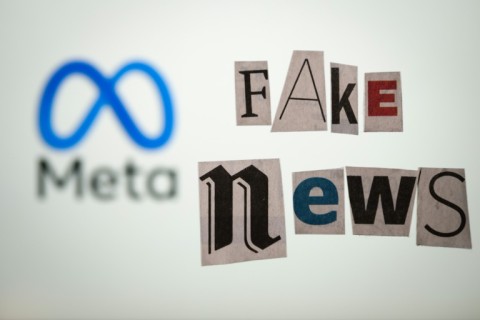Social Media Platforms Fuel Misinformation Inferno During Extreme Weather Events, Endangering Lives and Hampering Rescue Efforts
The digital landscape, once hailed as a powerful tool for communication and information dissemination, has become a breeding ground for misinformation, especially during times of crisis. A new report from the Center for Countering Digital Hate (CCDH) reveals a disturbing trend: major social media platforms are not only enabling the spread of dangerous falsehoods surrounding extreme weather events but are actively profiting from them. This algorithmic amplification of conspiracy theories, while simultaneously sidelining crucial, life-saving information, is jeopardizing emergency response efforts and putting countless lives at risk. The report paints a grim picture of a digital ecosystem where the pursuit of engagement and profit overshadows public safety and factual accuracy.
The CCDH study, which analyzed 100 viral posts on Facebook, Instagram, and X (formerly Twitter) during recent natural disasters, including the devastating Texas floods, found a systemic failure to implement effective fact-checking mechanisms. The platforms’ algorithms, designed to maximize user engagement, inadvertently prioritize sensationalized content, often pushing conspiracy theories to the forefront while burying verified information from official sources. This creates a chaotic information environment where individuals struggling to navigate a crisis are bombarded with a mixture of truth and fiction, making it difficult to discern reliable guidance and potentially leading them to make life-threatening decisions.
The lack of fact-checking is particularly alarming. According to the report, nearly all of the analyzed posts on Meta-owned Facebook and Instagram lacked fact-checks or Community Notes, a crowdsourced verification system increasingly touted as an alternative to professional fact-checkers. The situation on Elon Musk’s X was even more dire, with 99% of the posts lacking any form of fact-checking or Community Notes. Google-owned YouTube fared the worst, with a complete absence of fact-checks or Community Notes on the analyzed content. This failure to implement even basic verification measures allows misinformation to proliferate unchecked, further exacerbating the challenges faced by emergency responders and those affected by the disasters.
The report highlights the devastating real-world consequences of this misinformation ecosystem. During the Los Angeles wildfires, conspiracy theories peddled by figures like Alex Jones amassed significantly more views on X than the combined reach of legitimate emergency response agencies and reputable news organizations, including the Los Angeles Times. This dominance of misinformation not only undermines public trust in official sources but also diverts attention and resources away from critical rescue and relief efforts. The sheer volume of false narratives circulating online can overwhelm and confuse individuals seeking accurate information, hindering their ability to make informed decisions about their safety and well-being.
Beyond the spread of conspiracy theories, the report also uncovers the alarming rise of online scams targeting vulnerable individuals in the aftermath of disasters. Scammers, exploiting the chaos and desperation of those affected, impersonate federal emergency aid agencies on social media platforms to steal personal information. This predatory behavior further compounds the suffering of victims, who are already grappling with the emotional and physical toll of the disaster. The lack of adequate safeguards on these platforms allows these scams to flourish, turning the digital landscape into a minefield for those seeking help.
The CCDH report underscores the urgent need for social media platforms to take responsibility for the content they host and the algorithms that amplify it. The current business model, which prioritizes engagement and profit over accuracy and public safety, is demonstrably failing to protect users during times of crisis. The unchecked spread of misinformation during extreme weather events not only endangers lives but also erodes public trust in institutions and exacerbates social divisions. Without significant changes in platform policies and practices, the digital landscape will continue to be a breeding ground for harmful narratives, further hindering our collective ability to respond effectively to the increasing frequency and severity of climate-related disasters. The platforms’ inaction, in the face of mounting evidence of the harm caused by misinformation, makes them complicit in the suffering of those affected. A fundamental shift in priorities is necessary to ensure that these powerful tools are used to inform and protect, rather than endanger and exploit.


